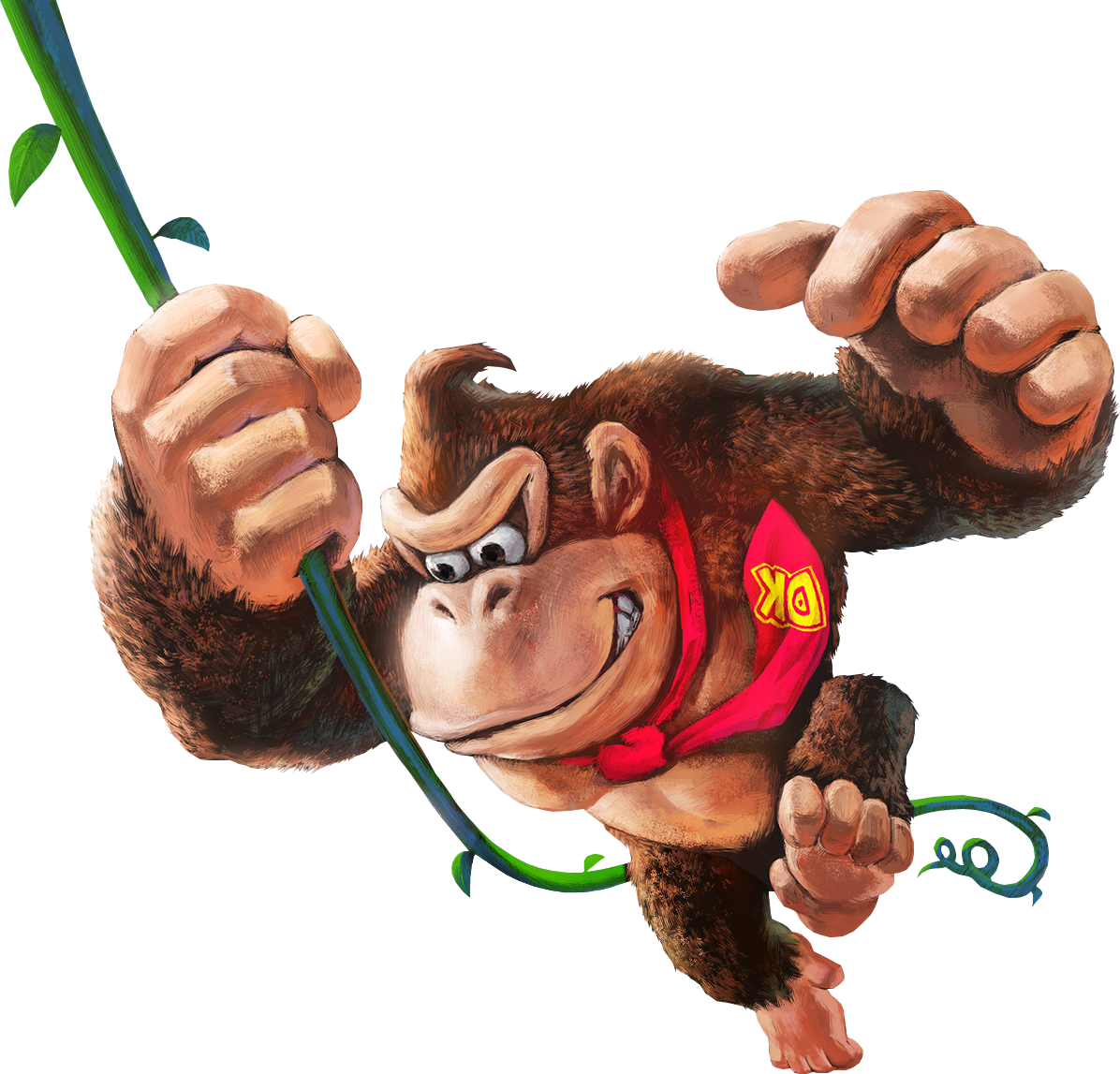



Kong
“Not a-doin’. You’re gonna stop because that’s what you do when you’re faced with an irresistible force!”
Nimble as they are powerful, the kongs are a race of proud explorers. Evolved from primitive apes thousands of years ago, they evolved to prosper on tropical islands and in dense rainforests. They have an innate curiosity and are drawn towards natural beauty, which led them to their lush green habitats. Among other advantageous qualities, they possess dextrous hands and feet, strong muscles, and winning smiles. They are herbivores by nature, hiding their ferocious power for those foolish enough to provoke them.
Giants of the Coast
Kongs have an extreme spectrum of diversity in size, color, and build. The smallest adult kong may weigh 70 pounds, while the largest may weigh upwards of 400 pounds. Families will often carry these traits through generations of offspring, but the exceptional strength of the kong will persist regardless of how large or small the individual is.
Having picked up pieces of language centuries ago from nautical travelers, kongs over time have created their own unique dialect, combining major pillars of the language with their own collection of gestures and symbols. They tend to prioritize gestures when speaking with animals or each other, and they prioritize the spoken language when interacting with members of other cultures.
Second-Story Life
Generations of living among trees and vines have molded kongs into exceptional climbers. They swing jovially through the tangled branches above, plucking bananas and knocking away coconuts before diving into the fresh water below. Some kongs will climb for hours just to find the perfect view of the land. Others may practice day and night to maximize the splash of their cannonball. To a kong, freedom and fun are just as important as food and air.
They build homes of multiple stories in the trees, connecting them with layered gauntlets of vines and bars and bridges. These branching designs reflect the diverse minds and mobilities of the kongs, as each individual has their own preferred way to move from one location to the next. This extends to their logic and problem-solving abilities as well, as kongs are often quick to dismiss straightforward answers to challenges that approach them. For a curious kong, using their skills to find a creative solution is often its own reward.
Cornering the Market
Despite their beastly appearance and limited vocabulary, kongs possess a profound intelligence all their own. They are uniquely skilled in math and merchantry, making them powerhouses of trade. While some kongs prefer to live in quiet luxury, others seek to leverage their skills for material gain. These kongs use their skills, agility, and far-reaching family ties to build lucrative industries, chasing wealth, recognition, and authority. They measure their wealth with large hoards, tucked away in caves much like the mythical dragons.
A kong’s hoard is not limited to gold and treasure, however. Its composition is unique to each kong family, dependent on their environments and the things they prefer to trade. Some hoards are composed of gemstones, others of enchanted fruit, and others simply thrown together from random artifacts.
Stealing from a kong or its family is dangerously unwise, as their hoards are considered sacred. While kongs are naturally docile and pragmatic, their pride is closely tied to their possessions, and they can fly into a white-hot frenzy if such possessions are threatened. Once someone has drawn their ire in such a way, there is no safe place for them until they return what they have taken.
Kong Names
Kong names are derived from their personalities and defining physical characteristics. These names are taken from adjectives in the Common language, and they are not strictly gendered. To reflect the long and diverse nature of life, many kongs at birth are given names that reflect their small and fragile stature. Shedding this name in favor of a new one, representative of one’s newfound strength or purpose, is seen as a rite of passage.
Young names: Baby, Tiny, Kiddy, Plucky, Diddy, Chubby, Fuzzy, Scrappy, Fluffy, Cutie, Kooky, Itchy
Adult names: King, Donkey, Hardy, Funky, Trooper, Macho, Witty, Lucky, Gentle, Clever, Quiet, Grumpy, Tidy
Kong Traits
As a kong, you have the following traits in common with other kongs:
Ability Score Increase. Your Strength score increases by 2, and your Charisma score increases by 1.
Creature Type. You are a Humanoid.
Size. You are Medium or Small. You choose the size when you select this race.
Speed. Your walking speed is 30 feet, and you have a climbing speed equal to your walking speed.
Powerful Build. You count as one size larger when determining your carrying capacity and the weight you can push, drag, or lift.
Island Adept. You have proficiency in the Athletics and Survival skills. Additionally, you can move through difficult terrain made of non-magical plants and overgrowth without expending extra movement.
Unarmed Juggernaut. Your unarmed strikes deal bludgeoning damage equal to 1d6 + your Strength modifier on a hit.
Kong Legacy. Kongs come from a long, diverse lineage, and their skills can manifest in unique ways. When you select this race, choose one of the following legacy options for your kong:
Thundering Might. When you take the Attack action on your turn, you can replace one of your attacks with a clap of repelling force. Each creature within 10 feet of you must make a Strength saving throw (DC = 8 + your Strength modifier + your proficiency bonus) or be pushed 10 feet away from you. You can use this feature a number of times equal to your proficiency bonus, and you regain all expended uses when you finish a long rest.
Speak with Small Beasts. Through sound and gestures, you may communicate simple ideas with Small or smaller beasts.
Lanky-limbed. Your reach is 5 feet greater than normal.
Languages. You can speak, read, and write Common and Common Sign Language.






Image Credits
"Donkey Kong Country Returns Concept Art" https://www.creativeuncut.com/gallery-16/dkcr-dk-island.html
"DK's Treehouse" by Lukas Liebhold: https://www.artstation.com/artwork/Rnldvm
SSBU Donkey Kong Isolated by ElevenZM: https://www.deviantart.com/elevenzm/art/02-Donkey-Kong-Super-Smash-Bros-Ultimate-809556378
SSBU Diddy Kong Isolated by ElevenZM: https://www.deviantart.com/elevenzm/art/36-Diddy-Kong-Super-Smash-Bros-Ultimate-809904619